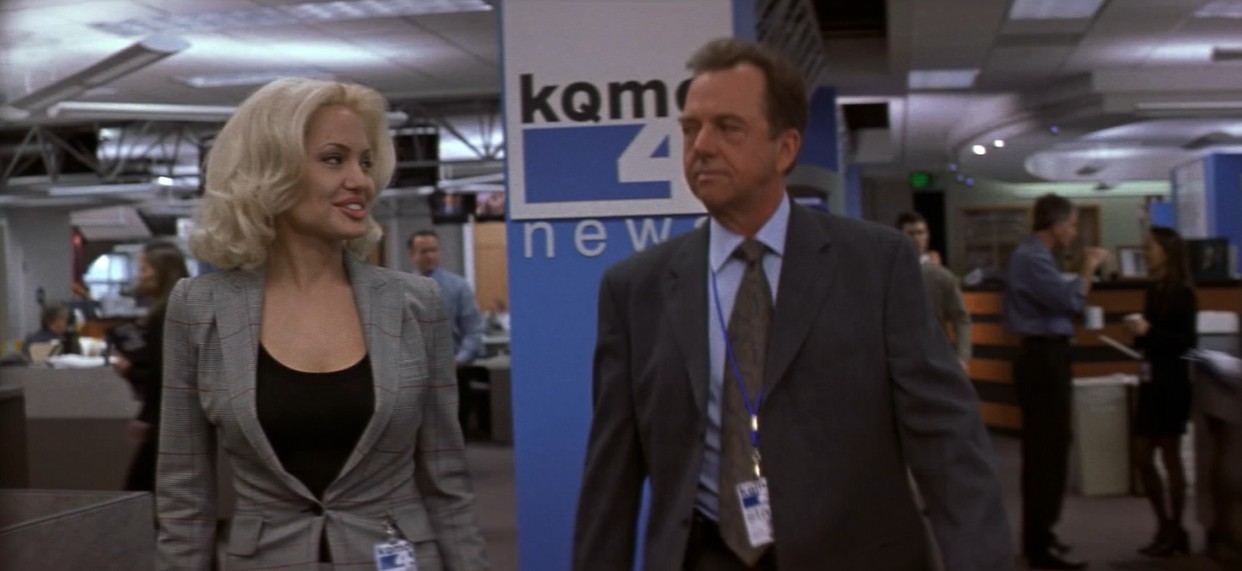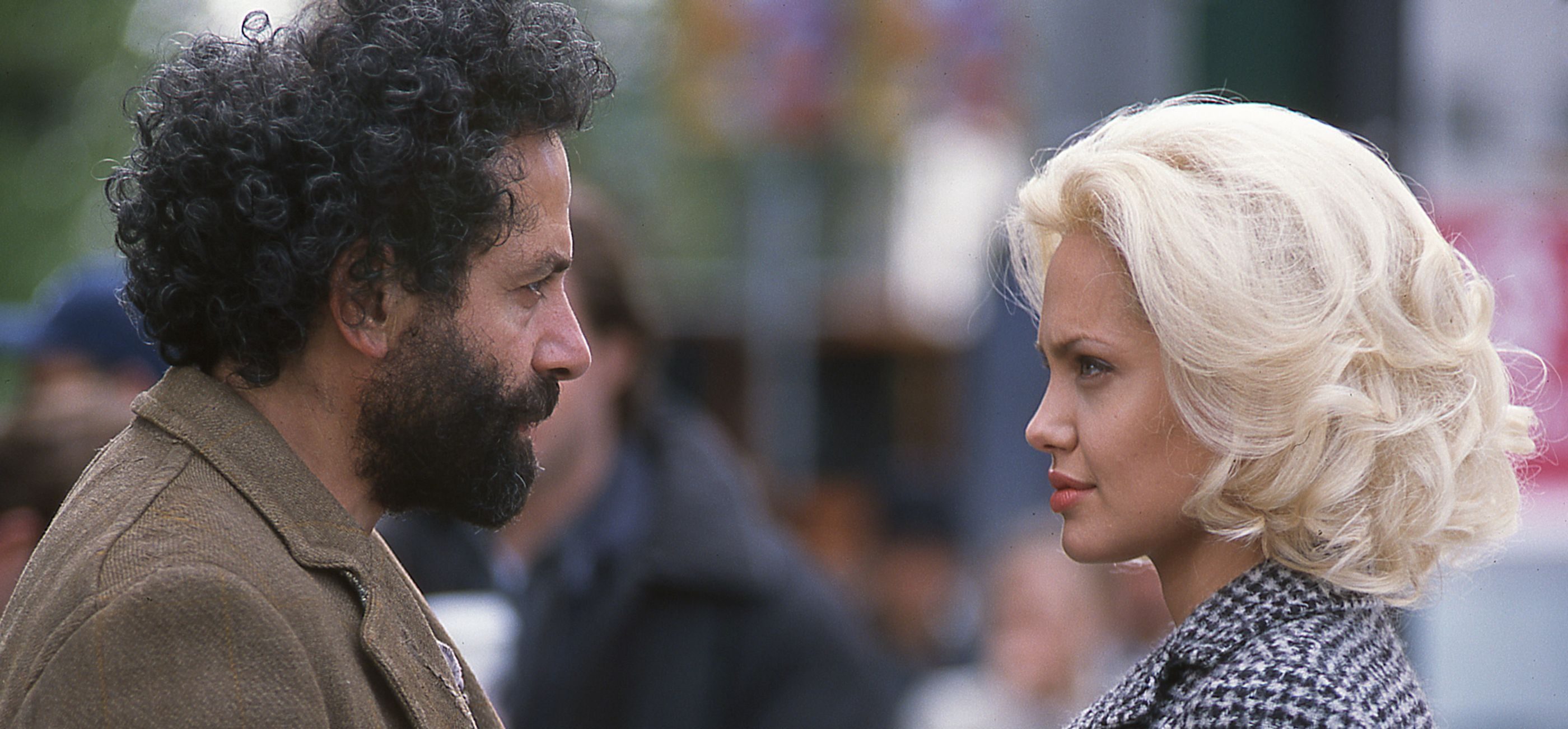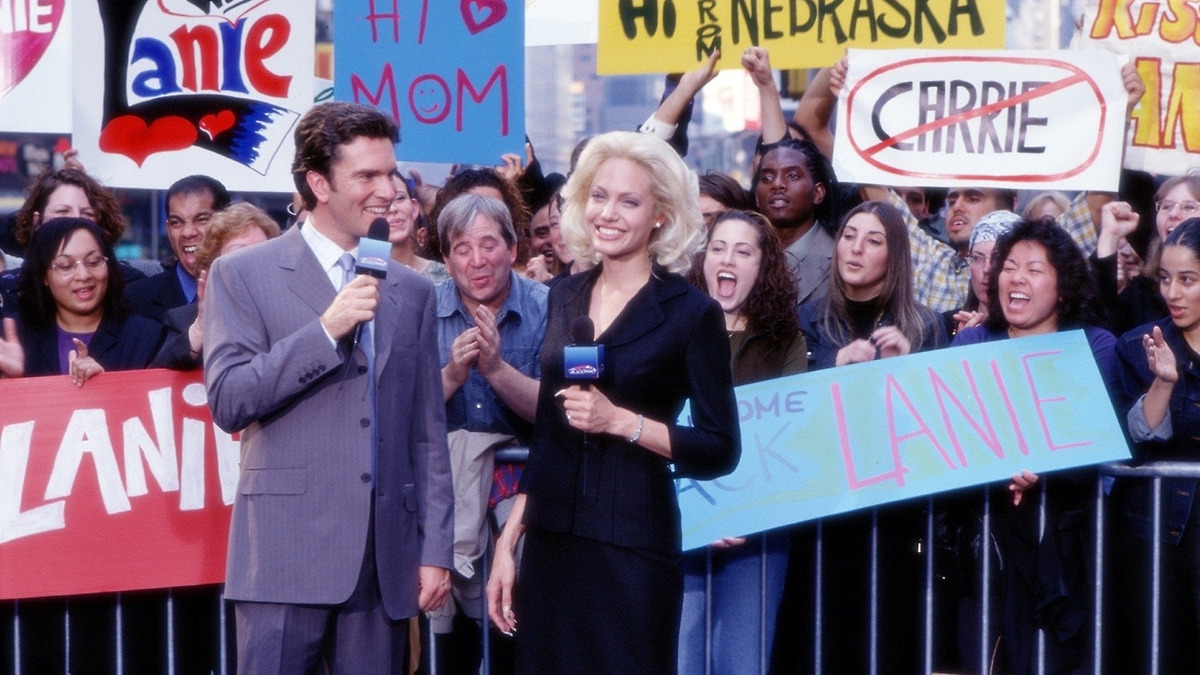In the 2002 romantic-comedy movie ‘Life or Something Like It,’ Angelina Jolie plays Lanie Kerrigan—a glamorous, driven TV reporter working for KQMO 4 News in Seattle. Throughout the film, Lanie is laser-focused on landing a job at AM USA, a high-profile national morning show based in New York. These two media outlets—KQMO 4 and AM USA—form the backdrop for Lanie’s personal and professional journey, playing pivotal roles in her character arc.
KQMO 4 News is a Fictional But Believable Seattle Station
KQMO 4 News is the local TV station where Lanie works as an on-camera reporter. While this station is fictional, it’s designed to mimic real-life local news stations in both name and format. The call sign “KQMO” follows the Federal Communications Commission (FCC) standard for broadcast stations located west of the Mississippi River, where stations typically start with a “K.” This detail adds a layer of authenticity to the station, even though there is no actual “KQMO” registered in Seattle or elsewhere in the United States.

The film shows KQMO as a standard local affiliate-type station, complete with news trucks, studio segments, and behind-the-scenes drama. Channel number “4” is also a subtle nod to many real-world NBC and CBS affiliates around the U.S., who often occupy this position on the dial. Essentially, KQMO 4 News is a realistic stand-in for any mid-sized market’s local news outlet, allowing viewers to buy into the setting without needing to associate it with a specific real-world company. This creative decision serves a purpose—it frees the filmmakers from having to conform to the rules or reputations of actual networks and instead allows them to build a fictional newsroom that fits Lanie’s narrative arc.
AM USA Appears a Nod to Real Morning Shows
AM USA, the show Lanie dreams of joining, is also fictional, but it seemingly mirrors national morning shows like ‘Good Morning America,’ ‘Today,’ and ‘CBS Mornings.’ It represents everything Lanie thinks she wants in life: prestige, exposure, and success. Interestingly, the name “AM USA” bears a strong resemblance to AM America, a short-lived morning program that aired on ABC in 1975. Hosted by Bill Beutel and Stephanie Edwards, AM America was the network’s first attempt to compete with NBC’s Today.

However, it lasted less than a year before being replaced by what would become the far more successful Good Morning America. In this light, AM USA may serve as both a fictional entity and a nostalgic wink to television history. In the film, AM USA is portrayed as a glamorous, fast-paced network show based in New York, where powerful media figures like Deborah Connors—played with cold precision by Stockard Channing—interview potential talent. The setting and tone are clearly drawn from real-world media giants, making AM USA feel like a plausible, albeit invented, part of the American television landscape.
Why Fictional Media Outlets Work Better for the Story
By choosing to use fictional networks, ‘Life or Something Like It’ enjoys creative freedom. Real networks would have likely imposed restrictions on how their brand and workplace could be portrayed, particularly in a movie where the main character undergoes a complete existential awakening. The use of KQMO and AM USA lets the filmmakers comment on the media industry and the idea of “success” without stepping on any legal or reputational toes. It also helps the audience focus less on brand recognition and more on Lanie’s emotional and psychological evolution.

These fictional outlets reflect real dynamics—the pressure, the performance, the ratings obsession—but they’re also blank slates, which makes Lanie’s journey feel universal. In a world where we often blur the lines between reality and fiction, ‘Life or Something Like It’ cleverly grounds its drama in the familiar setting of television news, without ever needing to name names. And maybe that’s the genius of it: it doesn’t matter whether the newsroom is real, as long as the questions it raises are.
Read More: Life or Something Like It Ending Explained


